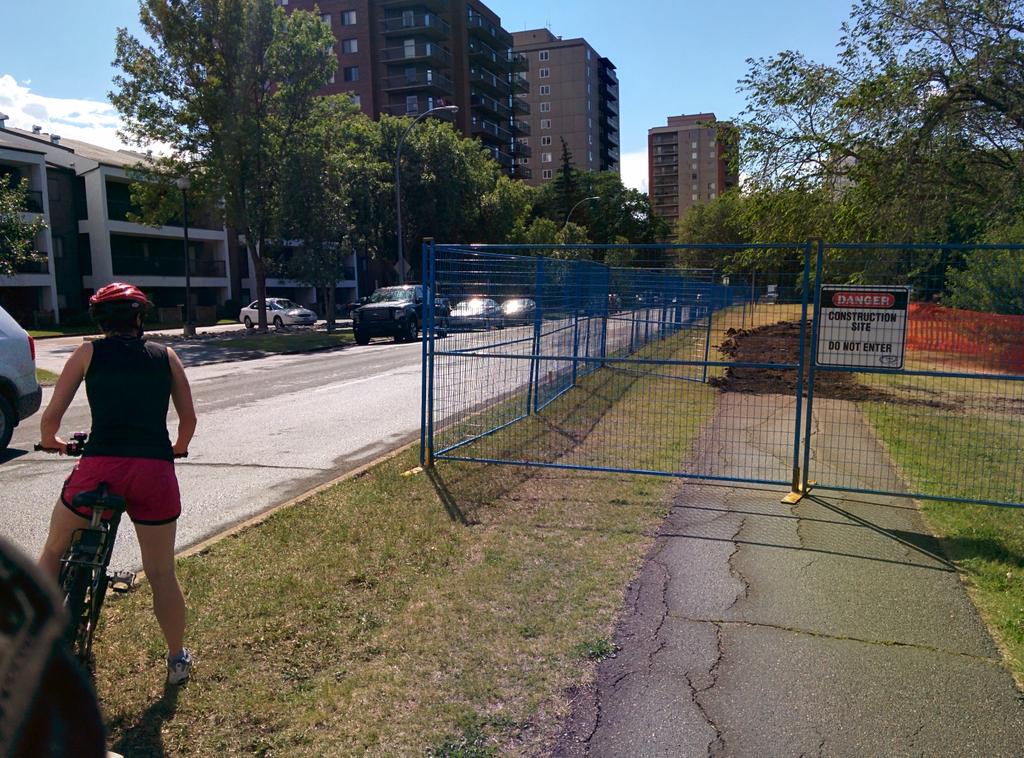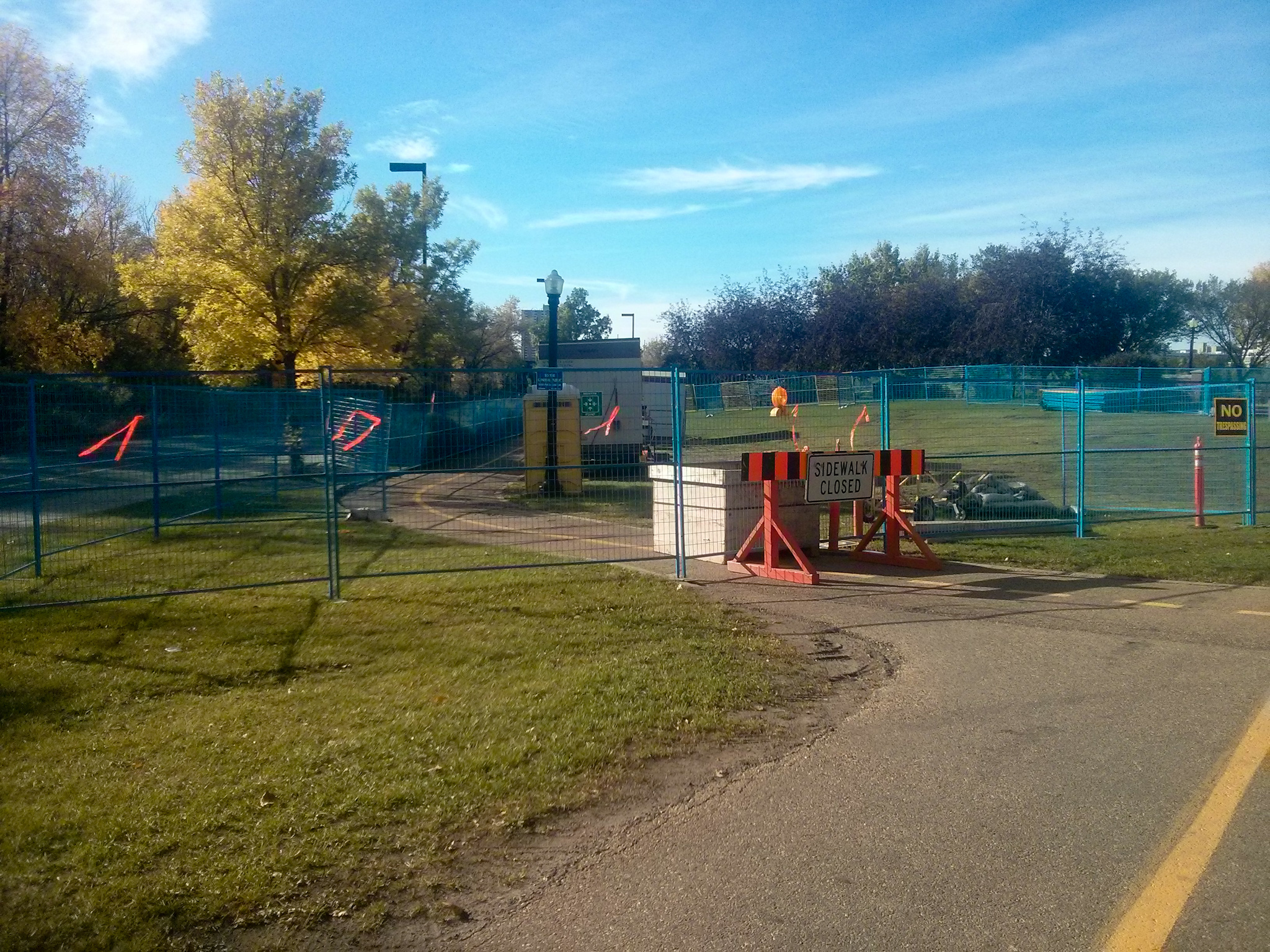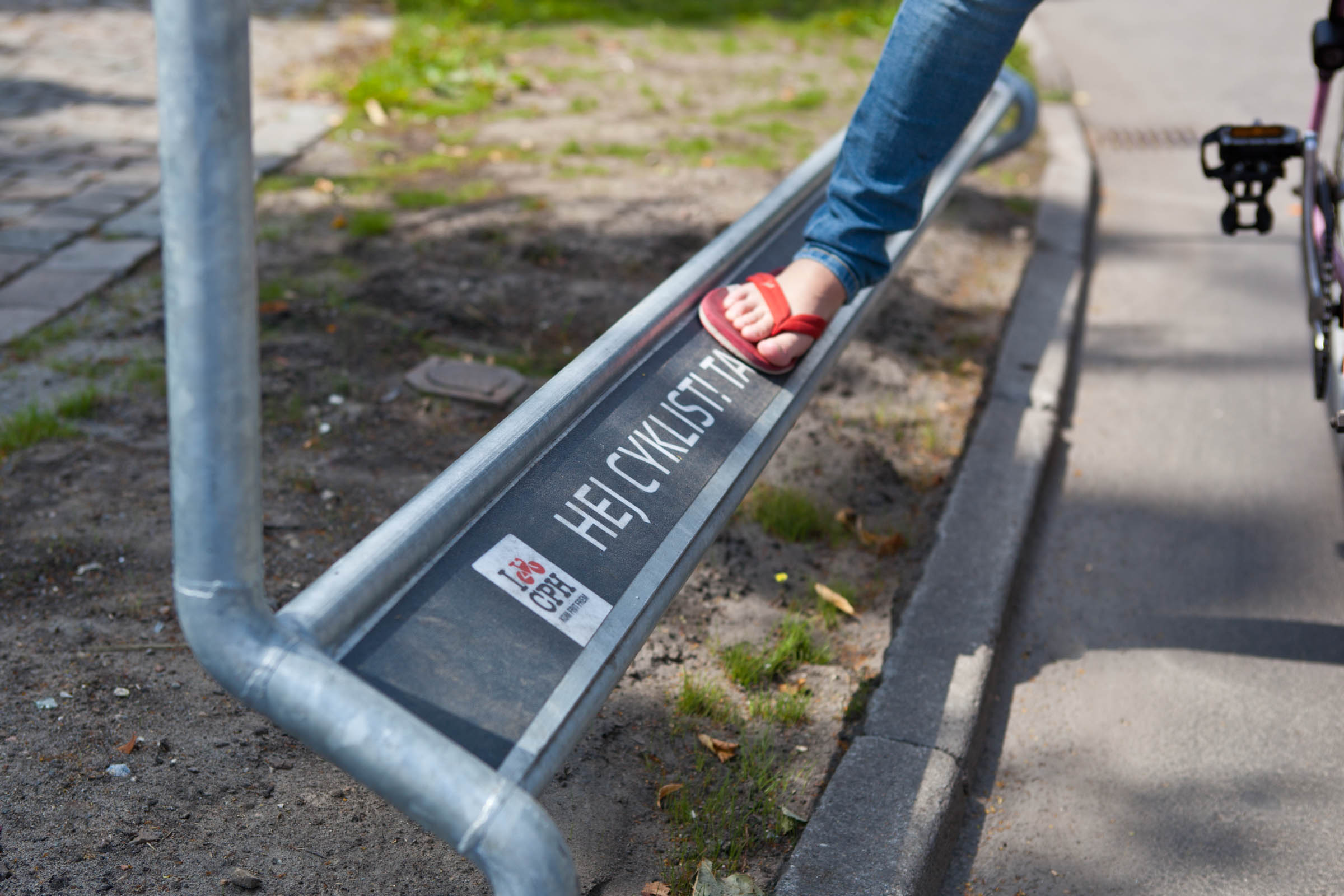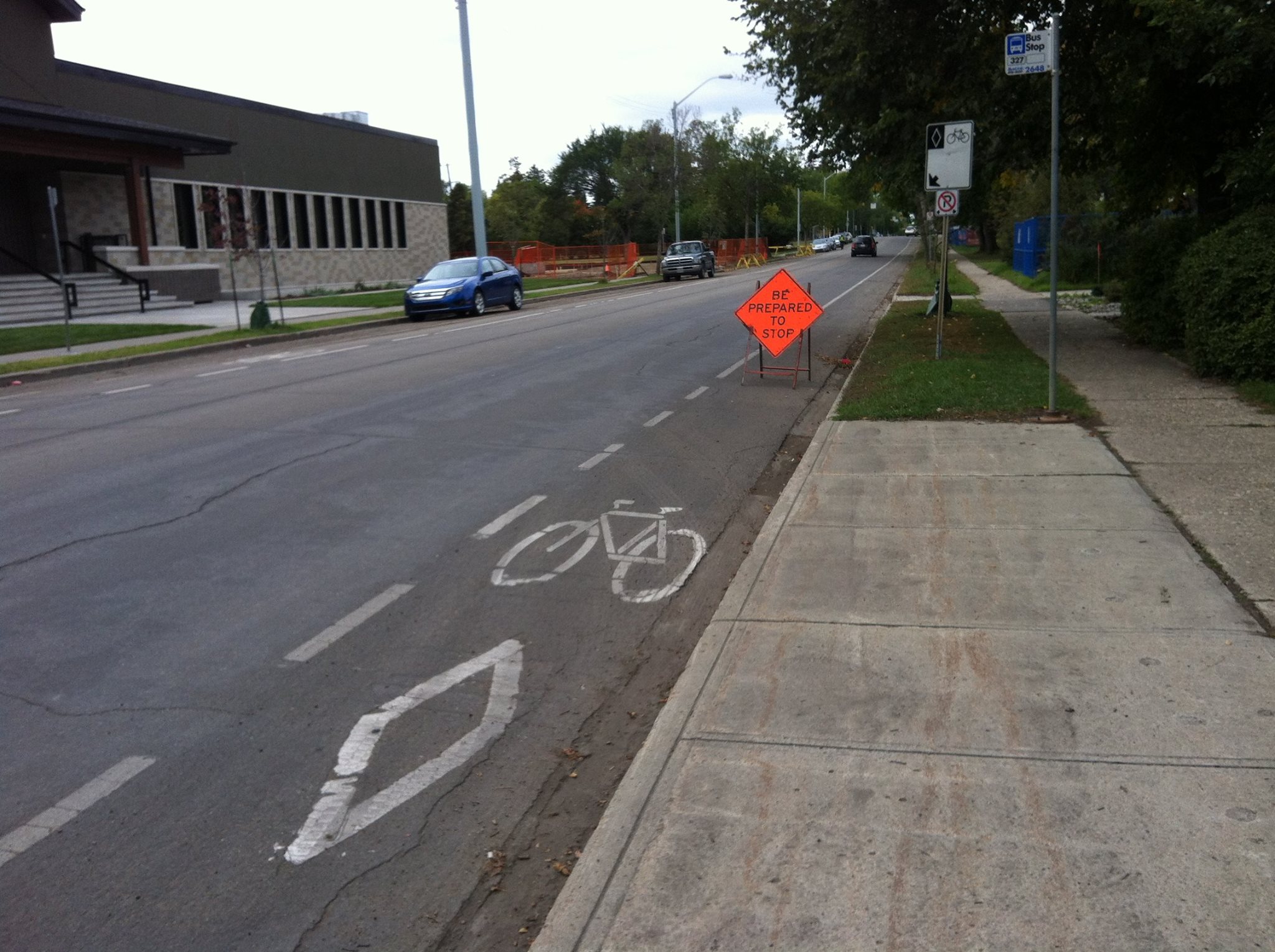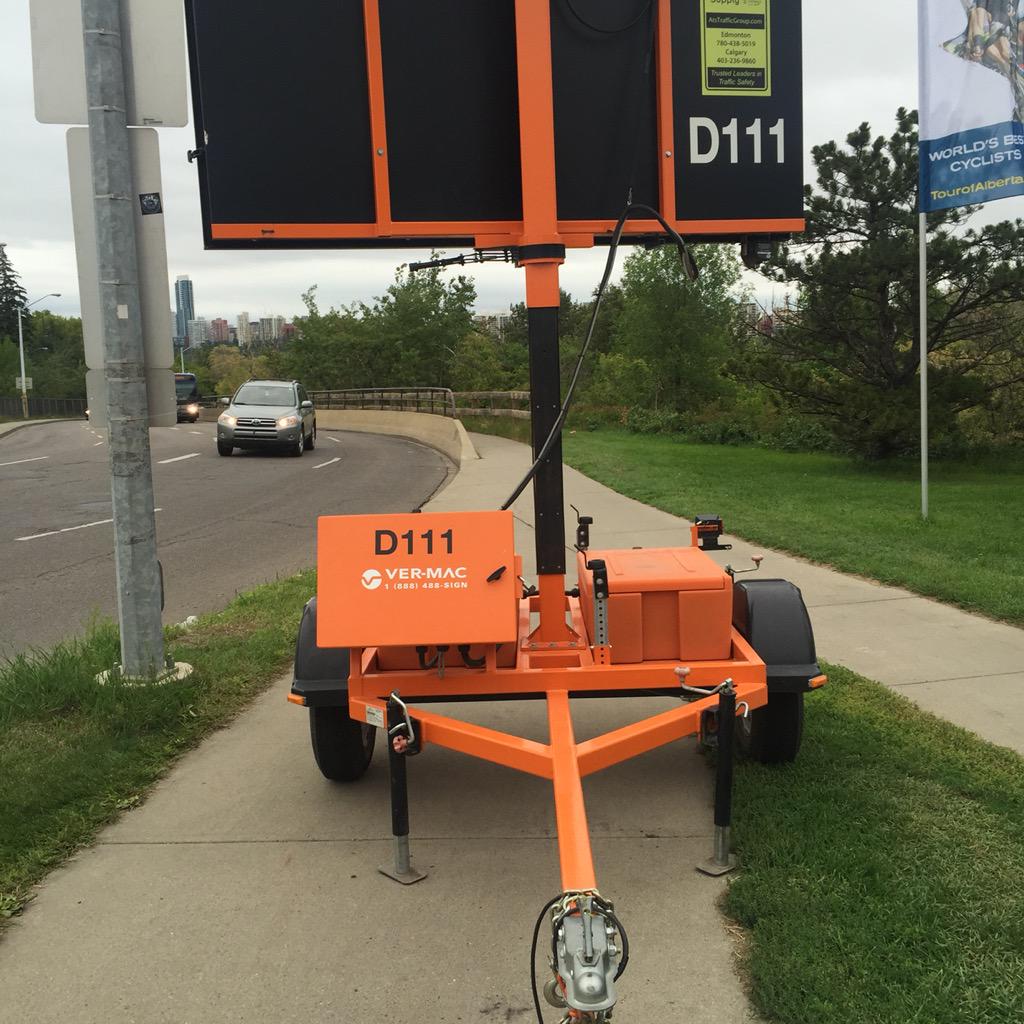The High Level Bridge may or may not be closed at any given time. Mill Creek Ravine is closed, probably. Saskatchewan Drive is still mostly closed — when we contacted the City in June, we were told that it would be closed for 2 weeks.
@edmontonbicycle @tofuligans @bigwickerjim @erinlovesyoga Thank you for sharing. We've passed this along to our Parks staff to get more info
— City of Edmonton (@CityofEdmonton) September 29, 2015
These three paths are some of the most heavily used transportation corridors in Edmonton for people riding bikes, as well as important transportation and recreational routes for people walking or running. They also share a secret: they're closed, but they aren't listed on the City of Edmonton's list of trail closures. The Saskatchewan Drive closure is almost mentioned, but the page only refers to the lower trail section in Queen Elizabeth Park, and its accompanying map recommends, as the alternative access for the park, the closed section of the trail along Saskatchewan Drive.
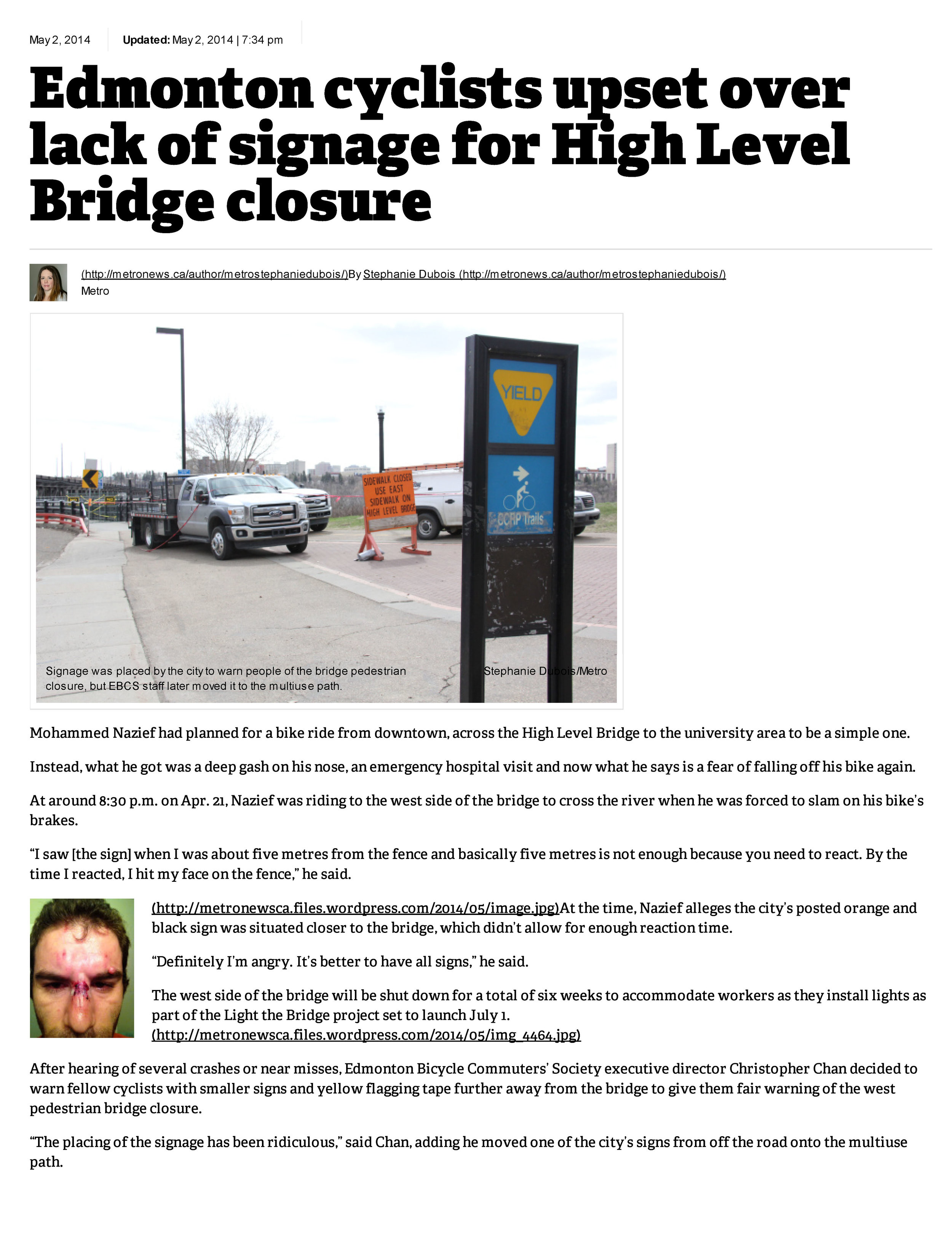 This isn't the first time the City of Edmonton has demonstrated this kind of disregard for its citizens. While roadway closures receive news releases, and work is often scheduled overnight and on weekends, they almost never mention whether or not there will be any impact to pedestrian access. One might presume, for instance, that if the High Level Bridge is being pressure-washed, it might have some impact on people walking by with no shelter. But you'd just have to roll the dice and take your chances to find out.
This isn't the first time the City of Edmonton has demonstrated this kind of disregard for its citizens. While roadway closures receive news releases, and work is often scheduled overnight and on weekends, they almost never mention whether or not there will be any impact to pedestrian access. One might presume, for instance, that if the High Level Bridge is being pressure-washed, it might have some impact on people walking by with no shelter. But you'd just have to roll the dice and take your chances to find out.
In contrast, work scheduled for shared-use paths often seems to choose the most disruptive timing with little or, more often, no notice: for example, two times in as many years, the High Level Bridge sidewalks have been closed, with work on the much busier west side happening during the high-use season and work on the quieter east side happening during the already-quieter winter. The City doesn't even meet the barest minimum of expectations: it fails to post adequate and safe signage at the site of a closure. Multiple people were injured, some seriously, in collisions with the unannounced, unsigned barricades on the High Level Bridge in 2014, and there have also been collisions with the fencing on the current Saskatchewan Drive closure. EBC added signage and high-visibility flagging tape in both instances, with the City improving their own signs only afterward. The Mill Creek closure is unsigned until you arrive directly at the closure itself, at the bottom of the hill.
Perhaps the most frustrating part of these experiences is the lack of information. We understand that closures need to happen for the City to do necessary work. We do not accept that the City is unable to provide accurate, timely information on when and where those closures are. It is not enough to only know that the High Level Bridge may be closed at any point on any side for the next 10 months. While there may be some variation and unexpected changes, construction work isn't entirely random. And even the City doesn't seem to know why Mill Creek Ravine is closed.
A call to 311 about any of these closures will result in being put on hold for several minutes while staff search fruitlessly for information on the City's website. Fruitlessly, because the information doesn't exist there. The exceptional 311 staffers may record your info to have someone call you back, or find a phone number for a project manager or someone from the parks or transportation department (which inevitably takes you to voicemail). This is unlikely to help you plan your commute for the morning: at least if you drive your car, you know what to expect.
All of this isn't just about convenience, nor a complaint about detours. It's about respect. A person riding a bike will generally find a way around these barriers. Sometimes this involves riding on roads such as Groat Road or the deck of the High Level Bridge. But for a person on foot, or using mobility aids such as walkers or wheelchairs, and especially in winter, these kinds of surprise-closures are especially discouraging.
The message that the City sends when it puts a barricade across a path is simple: you are second-class. It's a far cry from the cycling haven of Copenhagen, which has handrails and foot rests at traffic lights that say, "Hi, cyclist! Rest your foot here... and thank you for cycling in the city."
Recently, some receptive staff at the City have been paying closer attention to this problem and have been working to address it by responding quickly to complaints. The problem, though, is how reactive this is. No one should have to crash into a fence in the dark, and then post about it on social media, before the City decides to put up adequate signage. If for no other reason than to steer itself clear of liability, this should be a priority for the City.
Of course, Edmonton espouses a vision that champions active transportation. So it has many reasons to think of how closures impact users, and many reasons to better communicate those closures. But every unannounced physical barrier is also a symbolic one, detracting from that vision. The new traffic lights installed on Jasper Ave, which replace zebra stripe crossings, are another example: while the crossings may be safer now, an argument can be made that they prioritize automobile traffic even more than before due to their long timings, especially in off-peak hours. Observing the crossings at 119 St or 120 St and Jasper Ave in the later evening, you're more likely to see people crossing against the new light than waiting for it to change.
The City of Edmonton needs a culture change. If you come across a closure, send us a picture or share it on Twitter using the #yegbike hashtag and we'll check to see if the City has provided any information about the closure, and if not, we'll follow-up with the City. You can also call 311 and request someone call you back with information about how long the closure will be in place for. If you've had a near-miss or been injured by one of these closures, please let us know. The positive decision to install pedestrian-activated traffic lights at more intersections was driven by citizens contacting their councillors. Write to council to ask that they ensure that these lights make the streets more, not less, pedestrian-friendly.
In the grand scheme of transportation infrastructure, respect can seem a small thing. When people step out of their cars, though, that respect shouldn't evaporate. That kind of culture, where private automobiles are held in greater reverence than the humans inside them, leads to lopsided consultations, decisions, and laws. Help us hold the City to its vision, starting with a little respect.
Update: The Edmonton Journal has written an excellent article about this post.


